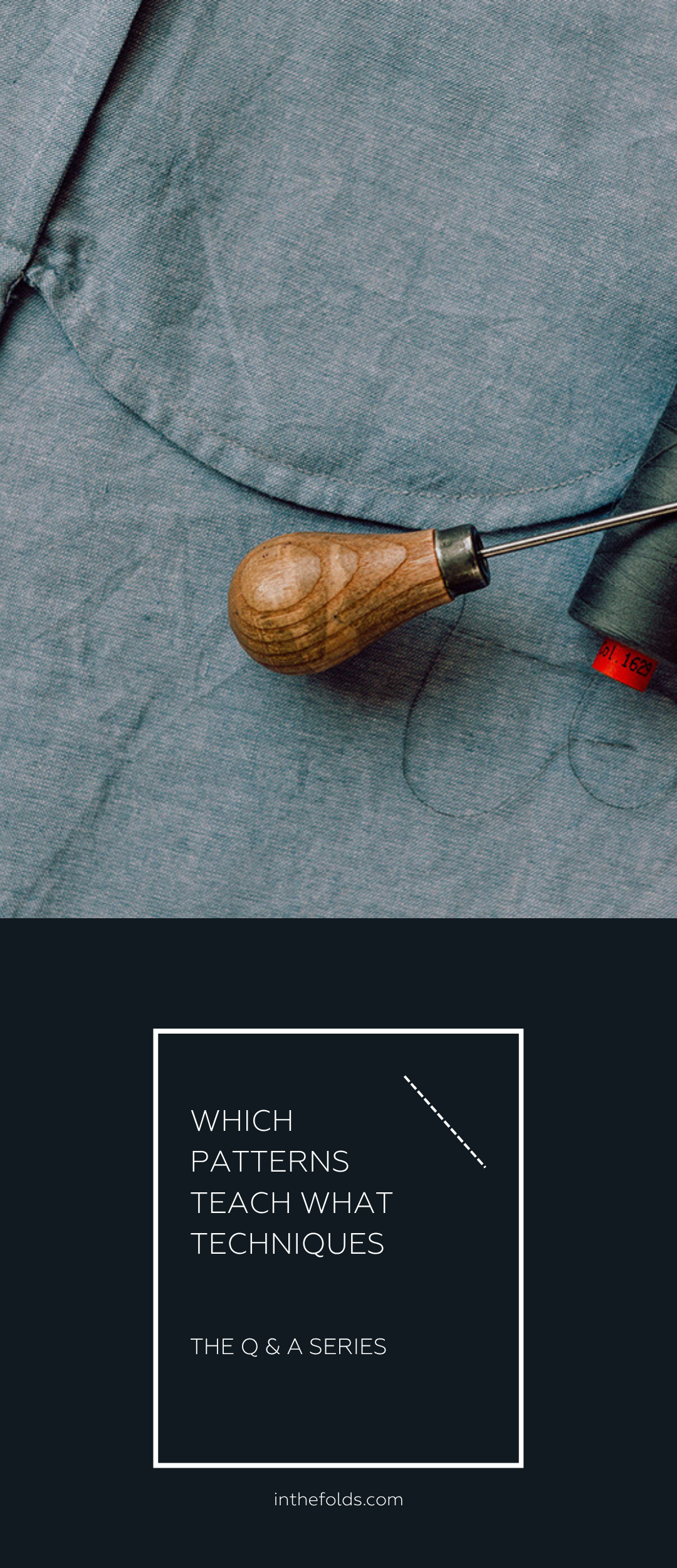THE Q & A SERIES - CUTTING LINEN (OR OTHER TRICKY FABRICS)
Hi Emily,
I love sewing with linen, but have real trouble keeping my fabric straight; it always "moves" when I mark it to cut it out. Are there any tricks to keep linen in place?
Thanks
- Jutta
Twickenham, UK.
Hi Jutta,
This is a great question! Linen generally has quite a loose weave - this is what makes it so beautiful to wear, but is also what can make it tricky to cut.
What I suggest you do with any fabrics that are tricky to cut (silks, chiffons, some rayons, some linens etc.) is to cut the fabric sandwiched between layers of paper.
Yep, I said it... paper! A lot of people in the home sewing word freak out at the mere suggestion of this, but in the industry it is common practice. I learned this trick when I studied fashion at university and it was a complete game changer! And yes, my fabric scissors have lived to tell the tale.
So if you're game to give it a go, continue reading...
prepare the paper
The way I do it is I take a large sheet of paper (I use "dot and cross" drafting paper) and draw a straight line along one of the long sides and one of the short sides. Use a long ruler (preferably clear) and use the dots and crosses as a guide.
If you would like to know more about the tools I suggest for patternmaking - please see this blog post from a few years ago.
prepare the fabric
Measure out the amount of fabric you require. If possible tear the amount you need.
Tearing generally ensures that you have got the fabric on grain - sometimes if your fabric is not great quality though, you will notice when you tear it that the grain is not straight.
If your fabric does not tear nicely - or doesn't tear at all (it's always a good idea to check on a small scrap of fabric first), you can find your cross grain by snipping into the edge of the fabric and then pulling a thread or two down from the cross-wise grain. This will create a straight line that you can cut along - continue across the whole width of fabric. Check out this tutorial from Colette if you need more details on how to do it this way.
If it looks like your sides aren't quite straight in comparison to each other, you may need to stretch the fabric on the bias (diagonals).
PIN SELVEDGE
Next, take the fabric and place it on top of the pattern paper, on a flat surface. With the fabric right side up, line up one edge (selvedge side) with the horizontal line on the paper (we'll deal with the vertical line soon).
Pin in place, being careful to check the edge remains straight between each pin.
If you are working on the fold (you will cut a pair of each piece), carefully fold the fabric in half, by bringing the opposite selvedge towards you. Line up the selvedge with the pinned edge, and then pin in place (using the original pins, so that the pins are now holding two layers of fabric and a layer of paper).
If you are cutting flat (single layer of fabric), you can skip this step.
PIN OTHER AXIS
Carefully line up the torn / cut edges on the left side with the vertical axis (marked with the vertical line on the paper). Make sure both layers of fabric are straight on the cross-wise grain, and then pin in place. I generally just pin the two sides (one vertical and one horizontal), but if you feel it will make things easier for you, you can also pin the other two sides of fabric to the paper.
Gently smooth out any wrinkles or bubbles in the fabric. I use a long plastic ruler to do this.
TOP LAYER OF PAPER
Put another layer of paper on top, sandwiching the fabric in between the two layers, before putting pins through all four layers (you can use new pins, or carefully remove the pins from the fabric between the paper and pin through all 4 layers).
Alternatively, if your fabric seems stable enough - you can miss this step and just have one layer of paper underneath the fabric. For example, for linen I would say that normally one layer of paper is enough as it shouldn't shift too much when it's pinned to the paper. For silk, I'd definitely put on the top layer of paper.
MARK/PLACE PATTERN PIECES
Now, place the pattern pieces on top of the paper, and line up the grainline on each pattern piece with the selvedges pinned to the paper.
I normally just pin the pieces in place and then cut. If you have your pattern on card, you can simply trace around each piece, and use a few pins to anchor them. You could also use pattern weights instead.
Carefully cut into each notch, and mark drill holes / darts etc. with a tailor's tack or chalk.
TIP: I find it easier to leave the cut pieces between the layers of paper until I'm ready to sew them. This way, they remain protected, but are also much easier to identify.
This tutorial was originally featured in the blog post 'The Acton Sew-along : 6 tips for sewing with silk (or other delicate fabrics). Check out this post for more tips for working with tricky fabrics!
I hope this solution solves your problem Jutta!
Happy sewing,
Emily
RESOURCES MENTIONED IN THIS ISSUE
P.S. Would you like to know what the Q & A series is all about? This page tells you a little bit more about the motive behind the series.
Don't have a question, but found this newsletter helpful? I'd love to hear from you! Get in touch and say hi.













